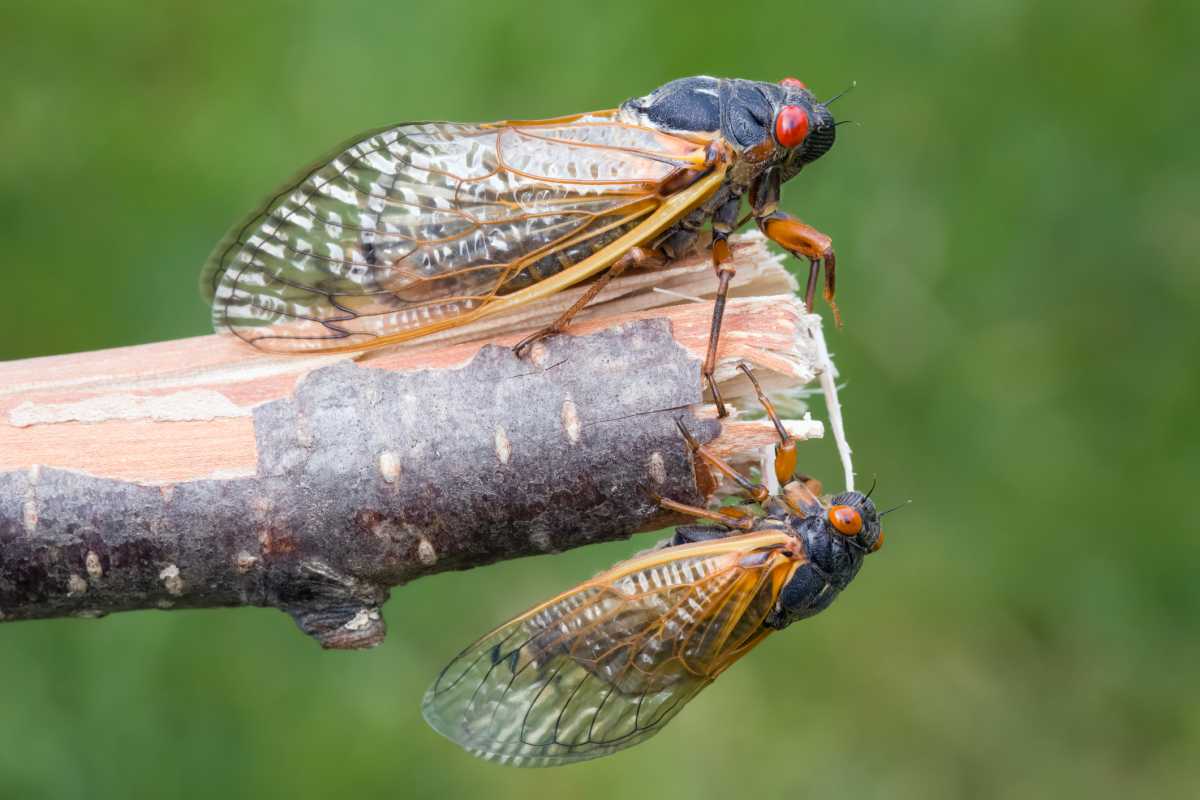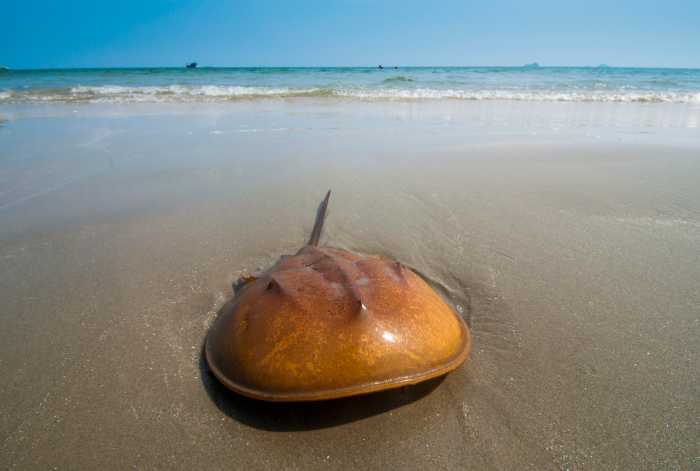If you were lucky enough, you might have caught a glimpse of or heard the songs of Brood XIV this spring and early summer on Long Island. This periodical group of cicadas emerges only once every 17 years. Brood XIV is the second-largest of the periodical cicadas, and Long Island is one of the many locations that played host to this phenomenon.
Last appearing in 2008, XIV is one of three 17-year cycle cicadas and one of seven total periodical cicadas broods. They boast red eyes, a black body, and orange wing veins. Cicadas have six legs, two antennae, two wings, five total eyes, and a beak for drinking. Often, they are mistaken for locusts, but they are not; locusts are a type of grasshopper. These insects belong to the Arthropoda phylum, Hemiptera order, and Cicadidae family. “Periodical cicadas are ‘magical’; that is why they were re-named ‘Magicicada’ by W.T. Davis in 1935,” said Dr. Chris Simon. Simon is an Entomologist (bug biologist), cicada specialist, and head researcher at the University of Connecticut (UCONN).
These insects are exceptionally unique due to their life cycle. After hatching from eggs in trees, they spend 17 years underground as nymphs (immature cicadas), feeding on tree roots. When the time comes to emerge, they dig to the surface and transform into adults. Males attract females with a loud buzzing noise referred to as their song. They flex their tymbals, which are drum-like organs located in their abdomen, as muscles rapidly pull them. The sound is intensified by their hollow body, according to Cicadamania.com. After mating, the females will lay their eggs inside trees, and the underground life begins after hatching.
“They are actively growing and passing through five juvenile stages underground,” stated Simon.
An adult cicada typically lives for around 6 to 10 weeks. Whether you like bugs or not, there is no reason for alarm if you have—or do—come across a Brood XIV.
“Periodical Cicadas are harmless to humans; they are not dangerous, they can kill small trees, but cause only minor damage to large trees when too many egg nests are laid in a branch,” explained Simon. “We are much more of an imposition on them, clearing their trees and building asphalt parking lots on top of them.”
That explains why the Long Island population was expected to decline during this emergence. Recording accurate data is extremely important this year. Stragglers from other Brood groups, like Brood VI, Brood X, and Brood I, could get mistaken for XIVs and cause incorrect mapping. This happens when a different brood group emerges in a year they’re not supposed to, and in another group’s area.
“A misleading map is worse than no map at all,” says UCONN’s Periodical Cicada Information Pages. According to Simon on her UConn cicada hypothesis page, tracking the 2025 population is essential in determining whether the population is nearing extinction on Long Island.
To help map out and aid the research of periodical cicadas, Dr. Gene Kritsky at Mount St. Joseph University established an app called Cicada Safari in 2019. It has become instrumental in the mission to track periodical cicadas. Multiple users have uploaded photos of their encounters with Brood XIV this spring and summer on Long Island. All locations recorded on Cicada Safari have been in Suffolk County. The hotspots were Port Jefferson Station, Edgewood Preserve in Deer Park, Ridge, East Yaphank, and North Hampton.
Thanks to this app, those who weren’t fortunate enough to spot Brood XIV with their own eyes can see that they did emerge on Long Island. It will also help answer Simon’s hypothesis about these unique insects, which are nearing possible extinction in the region. It won’t be until the year 2042 that we will see Brood XIV emerge on Long Island again.





























